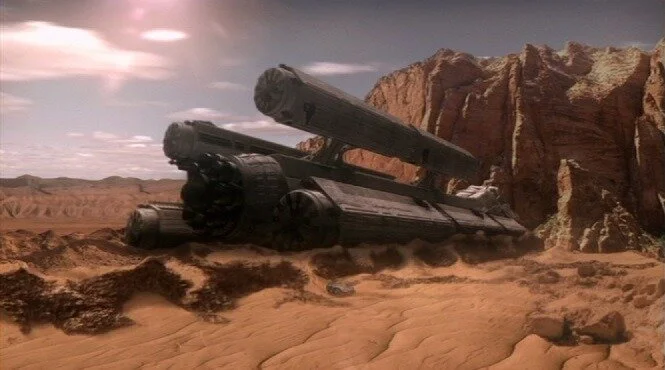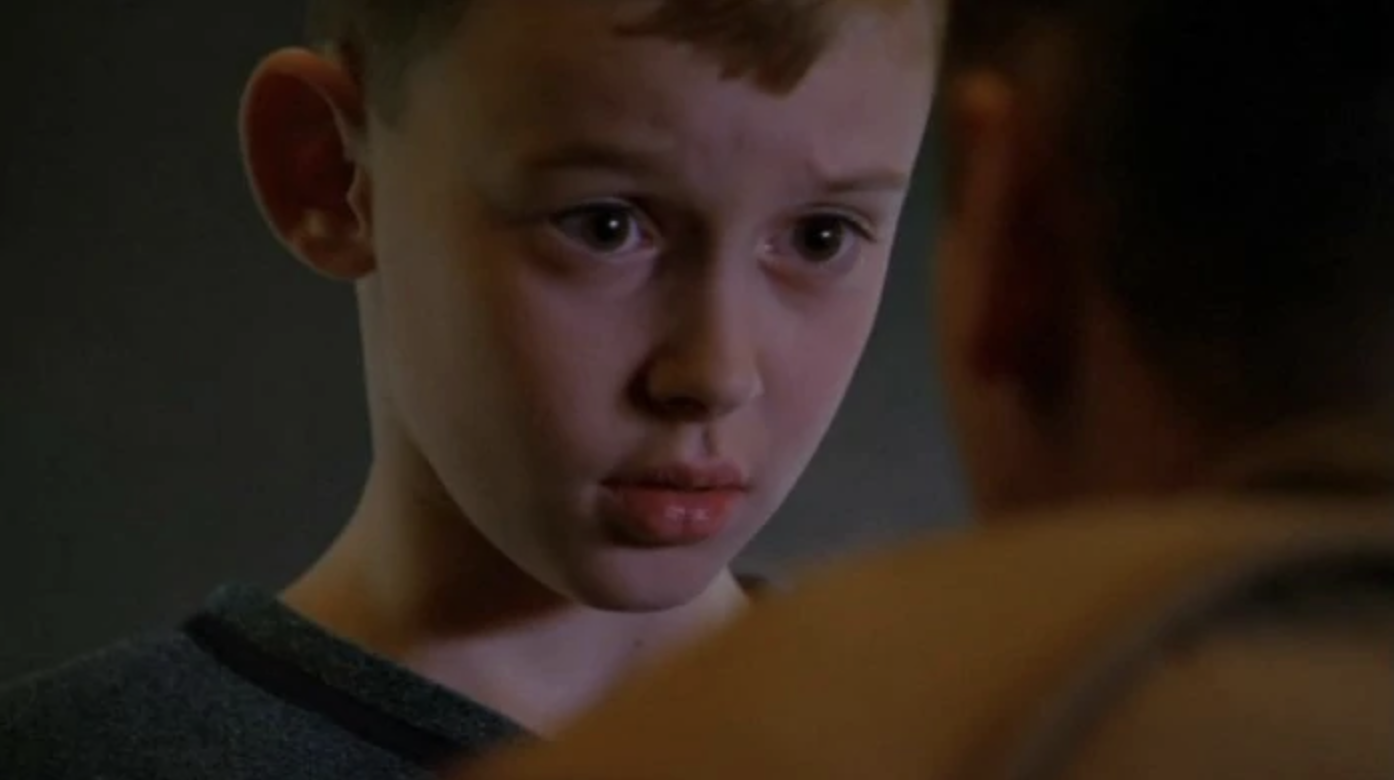Stargate SG-1: "Lifeboat" and the Trolley Problem
(The alien space ship Stomos from Stargate SG-1, Season 7, Episode 6, “Lifeboat”)
Although I am a lifelong Star Trek fan and host a podcast on Star Trek and philosophy (Meta Treks: A Star Trek Philosophy Podcast), I’ve been saying for a long time that Stargate SG-1 is as good as—and sometimes better than—Star Trek at exploring new ideas in speculative science fiction and philosophical concepts in a science fiction setting. The Stargate SG-1 episode “Lifeboat” (Season 7, Episode 6) is an excellent example of the philosophical content in the Stargate franchise, as the central dilemma in the episode can be conceived of as an example of the well-known Trolley Problem in philosophical ethics.
The Trolley Problem, in its simplest form, although there are many variations of it, is a dilemma in which one must choose between a larger and a smaller number of people who will live or die depending on which way one throws a switch along the track ahead. But if the switch is thrown to the left, a bridge ahead is out and the entire trolley will plunge into a ravine, killing all passengers aboard in the process. But If the switch is thrown to the right, the trolley will run over an innocent person tied to the railroad track, thus killing one innocent person to save a larger number of passengers aboard the trolley.
(Stasis Pods, Stargate SG-1, “Lifeboat”)
In the Stargate SG-1 episode “Lifeboat,” SG-1 discovers an alien ship that had crashed on planet P2A-347, the Stromos, full of passengers in stasis, having escaped the destruction of their own world as a result of a solar flare. The Stromos had been en route to another planet, Ardena, which the occupants of the stasis pods aboard the Stromos intend to colonize to rebuild their civilization. In the course of the episode, we discover that the consciousnesses of the occupants of some of the stasis pods, whose bodies had perished as a result of the Stromos’s failing power system, had been transferred into Dr. Daniel Jackson, the non-military archaeologist member of the SG-1 team. One crew member of the Stromos, a junior engineer named “Pharrin,” had transferred the consciousnesses of as many as 12 his fellow passengers into Daniel Jackson’s body to preserve them from being lost forever as a result of the ship’s failing power system.
Stargate Command and the other members of SG-1 naturally want to free Daniel Jackson from the burden of carrying the consciousnesses that had been forced into his body, with whom he struggles in a remarkable feat of schizophrenic character acting by actor Michael Shanks, and to see Daniel Jackson’s personality and consciousness restored in full. SG-1 offers to help restore and augment the failing power system of the Stromos but only if Pharrin removes the consciousnesses of his comrades from Daniel Jackson, thus killing/destroying the consciousnesses of many members of his own race to save one person, Daniel Jackson.
(Dr. Daniel Jackson possessing the consciousnesses of several deceased passengers of the Stromos in “Lifeboat”—Stargate SG-1, Season 7, Episode 6)
The analogy between the dilemma of “Lifeboat” and the Trolley Problem in philosophy should be clear: Pharrin must now choose whether to save not only the 12 consciousnesses residing in Daniel Jackson, but also everyone aboard the Stromos in stasis, and perhaps his entire civilization and culture as well, or to sacrifice the 12 consciousnesses for the sake of saving the life of Daniel Jackson and freeing him from the burden of the other consciousnesses that been imposed upon him by Pharrin.
Matters are complicated by fact that one of the personalities placed in Daniel Jackson’s body is Pharrin’s own young son, Keenin. So in addition to the difficult dilemma of choosing between saving his fellow passengers and saving/freeing Daniel Jackson, Pharrin must now also choose whether to save the life of his own son or to sacrifice Keenin’s consciousness for the sake of saving/freeing Daniel Jackson. This twist of events, with one of the consciousnesses in question being the consciousness of Pharrin’s own son is reminiscent of a variation of the Trolley Problem in which the the person responsible for throwing the switch and altering the path of the trolley has a close personal connection with the innocent person tied to the track ahead along one of the potential paths of the trolley. Would we fault a person for throwing the switch in the opposite direction to save the life of his or her own mother, child, partner, or best friend, even if doing so resulted in the death of a larger number of strangers aboard the trolley with whom one has no personal or emotional ties and connection? Or should we hold the person responsible for throwing the switch to utilitarian ethical standards and require that one be willing to sacrifice his or her own mother, child, partner, or best friend for the sake of saving a larger number of people, no matter one’s personal connection to the one person thus sacrificed for the sake of the greater good?
Although “Lifeboat” explores the nuances of this variation on the Trolley Problem, unfortunately “Lifeboat” takes the easy way out by the end of the episode for the sake of a dramatically happy and emotionally satisfying ending: Pharrin ultimately transfers the consciousnesses from Daniel Jackson into his own body alongside the consciousnesses he had already placed in his own mind, bringing total number of consciousnesses houses in Pharrin himself to somewhere around 25 “souls,” as he calls them. Although this results in a happier ending, it is philosophically dissatisfying for Pharrin to escape the moral and ethical Trolley Problem dilemma altogether instead of being forced to accept the moral and ethical consequences of whichever horn of the dilemma he may ultimately have chosen without the escape clause of transferring additional consciousnesses into his own body. “Lifeboat” thus sacrifices philosophical impact for the sake of a happy ending typical television shows of its era, an ending in which there are no lingering issues and in which the emotional, moral, and ethical tensions are neatly resolved by the end of the episode.
If you are at all interested in the Trolley Problem in philosophical ethics and even remotely interested in science fiction and its connection to philosophy, I highly recommend watching Stargate SG-1 in general and the Season 7 episode “Lifeboat” in particular. Although the Trolley Problem is often expressed in countless forms in various science fiction franchises, seldom do they explore variations of the Trolley Problem as well as “Lifeboat” delves into the consequences of a close personal tie between the agent responsible for choosing the outcome of the moral dilemma and one of the people whose lives are in danger of being sacrificed for the greater good—in this case Pharrin’s own son, Keenin. My only two faults with “Lifeboat” are (1) its cop-out ending in which the dilemma is not seen through to its logical and dramatical conclusion, and (2) its failure to explore still other variations of the Trolley Problem given the episode’s clear connection to this well-known philosophical and ethical dilemma.
Although Star Trek is often seen as the poster-franchise for philosophy in science fiction, I find that the Stargate franchise and Stargate SG-1 in particular are every bit as philosophically rich and plentiful as Star Trek has ever been. If you are interested in exploring the connection between philosophy, ethics, and science fiction, and in science fiction’s ability to pull our philosophical intuitions in various directions in a way that is free of the biases of our day-to-day culture and lives, I highly recommend you dive into Stargate SG-1 without delay.











